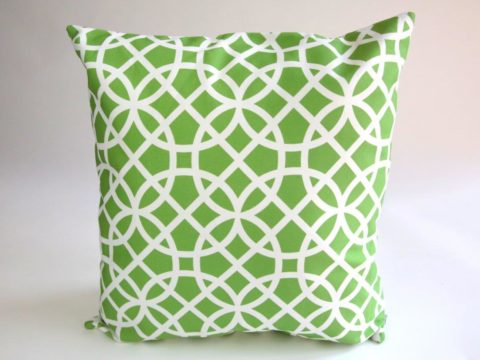Robert Dudley: Life Story
Chapter 3 : Reconciliation
In July 1554, Queen Mary married Philip of Spain in the hope that she would found her own dynasty. As part of the general move to reconcile previous rebels, Robert, Henry, Ambrose and John were released. Their mother, who had been on good terms with Queen Mary in their younger days, had pleaded for them, as evidenced by her will of 1555 which left mementos to courtiers who had interceded for her sons.
As the sons of a traitor, who had been tainted by act of Parliament, Robert and his brothers had no claims to land or titles. They were obliged to begin the family’s climb to power influence all over again. Robert was a man of talent as well as of ambition and joined the household of King Philip, where he made friends amongst the king’s Spanish entourage. He was probably employed by the Queen’s Council on military matters in during 1556, particularly in relation to an inspection of the defences of Calais, and in 1557 he joined the Anglo-Spanish force in the latest round of the wars between Span and France. The Anglo-Spanish forces scored a notable victory at St Quentin, and Robert’s conduct of his office as Master of Ordnance was so effective that King Philip sent him as special messenger to Queen Mary to announce the victory.
Either in recognition of the Dudley brothers’ service, or for more complex political reasons, the Act of Attainder against Robert’s father was reversed and he and his remaining siblings – Ambrose, Mary (now Lady Sidney) and Katherine, Lady Huntingdon, were ‘restored in blood’. John had died soon after his release from the Tower, and Henry in the French campaign.
Robert’s exact whereabouts in 1558 is uncertain. He may have been in and around the court, probably at the house of his brother Henry’s widow, Margaret nee Audley, at Christchurch, near St Bartholomew Le Grand, and at some point he and Amy probably visited their estates in Norfolk (which had now come into their possession, following the death of Amy’s mother). Amy spent most of her time at William Hyde’s house at Throcking in Hertfordshire, and Robert probably visited her there. Throcking is less than 25 miles from Hatfield, which was the preferred location of Lady Elizabeth. Robert was certainly in contact with Elizabeth, and at some time during this period, according to a statement later made by Elizabeth herself, sold a piece of land to lend her money.
Robert’s friendship with Elizabeth was known at court. The Count de Feria, King Philip’s chief noble at the English court, wrote to his master as Queen Mary’s health deteriorated, that ‘Madam Elizabeth’ already saw herself as queen, and that the men most likely to be influential in her reign included Sir William Cecil and Lord Robert Dudley.
Within a day of Elizabeth's accession to the throne on 17th November 1558, Robert was by her side and one of her first acts was to appoint him as her Master of horse. The role of Master of Horse was a prestigious one: it entailed the supervision of the royal stables which contained some 275 horses and the purchase and training of animals to be used by the Queen herself, her household, her ladies and the royal messengers. It was a very senior royal post and the Master of the Horse was entitled to permanent lodgings at court. On ceremonial occasions the Master of the Horse rode immediately behind the sovereign, and he also had responsibility for overseeing progresses.
One of Robert’s first major duties was the arrangement of Elizabeth’s coronation, which took place in January 1559. The day had been chosen in consultation with the astrologer, Dr John Dee.
Robert was not immediately appointed to the Privy Council, but it was soon apparent that he was high in Elizabeth's favour. An important indicator of this was his appointment as a Knight of the Garter in 1559, along with Henry Manners, 2nd Earl of Rutland and Thomas Howard, 4th Duke of Norfolk.
One of Robert’s attractions for the queen, as well as his good looks and athleticism – traits she always admired – was his ability to entertain her, and make her laugh. Many of the dispatches made to foreign courts in the early days of her reign remark on her wit, and pleasure in amusing conversation or jokes. Robert’s humour clearly matched hers, and the two would share private jokes and tease each other.
Elizabeth enjoyed giving pet names to her courtiers – Robert became her ‘Eyes’ and would play on this by drawing double ‘o’s as eyes, in his frequent correspondence with her. Elizabeth kept his letters, and over twenty still exist.
The exact nature of Robert’s relationship with Elizabeth was debated, both then and now – they were accused of being lovers, but always denied that they had any physical relationship. Elizabeth was not ashamed in any way of her love for Robert, referring to him as her ‘best friend’, exhorting a foreign envoy to ‘regard and honour him as my own brother, for thus do I love him and will love him and regard him all my life long, for he deserves it.’
Given the highly public life that Elizabeth led, accompanied everywhere by her ladies, and the fact that bearing an illegitimate child would probably have cost her the throne, it is probable that she did not have intercourse with Robert, although whether their relationship was strictly platonic, or might have involved some physical manifestation, is less clear-cut. She certainly frequently touched him familiarly.
Lord Robert Dudley
Family Tree


